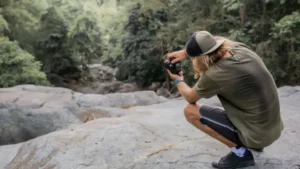Travel
Dolomites Hiking: Exploring Italy’s Most Breathtaking Trails

The Dolomites hiking adventure stands as a magnificent outdoor excursion that stretches across Europe’s landscape. The Dolomites in northern Italy showcase breathtaking limestone peaks together with transparent lakes and captivating alpine villages. Throughout years of Alpine trail hiking, we have discovered that the Dolomites surpass all other mountain ranges with their combination of natural beauty, extensive accessibility, and trail variety. The Dolomites hiking experience guarantees everlasting views for hikers navigating meadows or rising up steep ridges. This region is recognized as a UNESCO World Heritage Site, which brings trail hikers from around the world. A trek through the Dolomites, binding history and culture with natural beauty, will give you the complete traveling experience you’ve sought.
Best Time to Hike in the Dolomites
Visitors planning a Dolomites hiking experience must focus on their chosen travel period. Late June through early October proves ideal for visiting because all paths become free of snow while all rifugios remain operational. Summer offers a perfect climate and vibrant wildflowers during this time that elevate the enchantment of your Dolomites hiking adventure. September provides quieter weather conditions and fall color splendor in addition to lower temperatures. Early spring along late autumn are unsuitable seasons since the trails often become muddy and may remain closed. Safety and complete enjoyment while hiking the Dolomites depend on advanced research of local weather conditions and trail condition information. Your hike at the proper moment will transform an enjoyable trip into a memorable experience.
Top Hiking Trails in the Dolomites
Hikers can experience some of the world’s most recognized trails through Dolomites hiking. The Tre Cime di Lavaredo loop is our top recommendation because it provides a moderate challenge and breathtaking mountain views. Lago di Braies offers hikers peaceful vistas, which make it an ideal spot for taking photos during Dolomites hiking trips. The Seceda ridgeline delivers unbeatable mountain views, and the Cinque Torri trail combines its Alpine landscapes with World War I historical significance. All hiking levels can find trails that suit them within this area. The Dolomites mountain paths are distinctly labeled and change in challenge level to accommodate all hiking abilities. Your selection of trail determines how much satisfaction you will derive from hiking in the Dolomites.
Multi-Day Treks in the Dolomites
The Alta Via 1 and Alta Via 2 multi-day hiking trails in the Dolomites present a spectacular way to discover this range more deeply. Long-distance trails run throughout the Dolomites region, which guide hikers between imposing mountain peaks and alpine pastures and quaint mountain refuges. Anyone starting their exploration of the Dolomites hiking should consider undertaking Alta Via 1 based on our first-hand experience. Travelers can make their journey more convenient as rifugios offer satisfying meals with comfortable accommodation options. The challenging Alta Via 2 trail requires experience because it demands expertise from its hikers. Hiking through the Dolomites for multiple days offers a complete submersion into the environment while giving you experiences that blend natural beauty with difficult terrain and peaceful moments.
Photography & Instagram-worthy spots
Dolomites hiking trails double as a paradise for photographers. Three essential locations for photo opportunities in the Dolomites are sunrise at Lago di Braies, golden hour at Tre Cime, and the breathtaking ridges of Seceda. This adventure provides unlimited photo opportunities for both DSLR users and smartphone photographers. Since the views are too beautiful to overlook, you should bring supplementary batteries and memory cards for your devices. Drone operations exist with particular restrictions that need to be examined ahead of time. Photographers find pure inspiration in the beautiful combination of alpine meadows alongside rugged peaks. This hiking allows you to capture some of the most aesthetic backdrops across Europe for Instagram posting.

Dolomites Hiking Map & Navigation Tips
The correct tools simplify the process of hiking through the Dolomites trails. Our recommendation for printed guides involves Tabacco Maps, while digital navigation should use either the Komoot app or the Gaia GPS application. We use these navigation aids during our Dolomites hiking excursions to protect ourselves when the fog descends or weather conditions abruptly worsen. Most trails are easy to find through proper markings, but distant areas need backup GPS navigation for safety. You should always download maps while traveling offline before hitting the trail. A successful hiking of Dolomites experience relies on proper planning and direction knowledge. Mobile phone service works poorly within mountainous territory. The combination of smart navigation systems ensures that your Dolomites hiking journey remains uninterrupted while being both picturesque and safe.
Essential Packing List for Hiking
Every Dolomites hiking expedition demands that you apply sound packing methods. We advise travelers to plan for adaptable clothing layers, waterproof items, durable hiking boots, and energy-dense food based on our extensive hiking experience in the Dolomites. When venturing into extended Dolomite mountain hikes, you should carry a sleeping bag liner, toiletries, and a headlamp as well as cash for rifugio stops. Lightweight products selected from reputed outdoor brands enhance comfort and safety in outdoor situations. You must adequately prepare because Dolomites hiking climbs steep elevation slopes while facing unpredictable environmental conditions. Organize your gear carefully when packing, since it will prepare you to handle whatever the Dolomites hiking paths might present.
Getting to and Around the Dolomites
Reaching your Dolomites hiking base is easier than it seems. The closest airports are in Venice, Verona, and Innsbruck. From there, renting a car is the most flexible way to reach trailheads. Public transportation options include trains and buses to key towns like Cortina d’Ampezzo or Ortisei. Once in the region, summer shuttle services make Dolomites hiking logistics easier. We’ve used both private cars and public transport—each has its pros. For Dolomites hiking, accessibility improves yearly, especially with eco-friendly transport initiatives. Plan to make your hiking experience of the Dolomites smooth from the moment you land in Italy.
Safety Tips for Hiking in the Dolomites
Soothing valleys await those hiking in the Dolomites, yet visitors must observe proper care of this natural environment. Preparation becomes necessary because the area contains sudden storms along with cliffs and remote locations. Before hiking on the trails, verify the weather conditions and inform someone about your planned path. Emergency number 112 will allow you to get through to mountain rescue teams. Hikers in the Dolomites need safety equipment that includes trekking poles and layered clothes, together with a GPS application. Never underestimate the mountains. The right planning and respect enable Dolomites hiking to be both safe and an unforgettable experience.
Conclusion: Planning Your Dream Dolomites Hiking Adventure
Dolomites hiking is more than an outdoor activity—it’s a journey into the heart of nature. With towering peaks, alpine meadows, and a rich cultural history, the Dolomites offer unforgettable hiking experiences for all levels. This guide, built on firsthand experience and trusted expertise, is your roadmap to a safe, inspiring adventure. From picking trails and gear to staying in rifugios and respecting the environment, every detail counts. With careful planning and a spirit of discovery, your Dolomites hiking trip will be one to remember. Whether it’s your first hike or your fiftieth, the Dolomites will steal your heart.
READ ALSO: How to Travel the World on a Budget
-

 BIOGRAPHY7 months ago
BIOGRAPHY7 months agoBehind the Scenes with Sandra Orlow: An Exclusive Interview
-

 HOME1 year ago
HOME1 year agoDiscovering Insights: A Deep Dive into the //vital-mag.net blog
-

 HOME1 year ago
HOME1 year agoSifangds in Action: Real-Life Applications and Success Stories
-

 BIOGRAPHY1 year ago
BIOGRAPHY1 year agoThe Woman Behind the Comedian: Meet Andrew Santino Wife




























